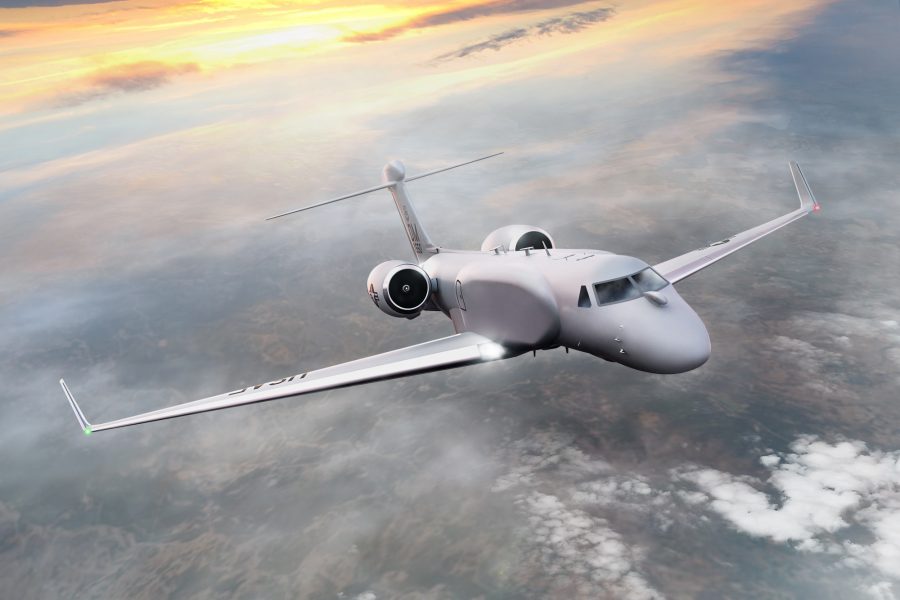The Air Force has approved Airmen to start training with the EA-37B Compass Call Mission Crew Simulator, BAE Systems announced. The system will provide realistic training and mission rehearsal for EA-37B crews, who perform long-range electromagnetic warfare missions.
The system succeeds one used for the EC-130 Compass Call, which the Air Force is replacing with a modified Gulfstream 550 business jet.
The new simulator “improves warfighter readiness by providing a high-fidelity, simulated tactical environment that replicates complex and dynamic scenarios they can encounter during real-world operations,” BAE said in a release. The system offers safe training in a controlled environment, and reduces risk and cost compared with live-fly training, it added.
The EA-37B is based at Davis-Monthan Air Force Base, Ariz. The first arrived in August 2024, flown in by then-Air Combat Command boss and now Chief of Staff Gen. Kenneth Wilsbach. Two are now in service; they are operated by the 43rd Electronic Combat Squadron and maintained under a contractor logistics support arrangement. The unit reports to the 55th Electronic Warfare Group at Offutt Air Force Base, Neb. The first one flew its first training mission in May.
The Air Force plans to acquire at least 10 EA-37Bs, down from an original target of 12. The service included more EA-37Bs on its 2023 Unfunded Priorities List, which asks Congress to fund certain capabilities that for various reasons fell out of the official budget request. Sen. Mark Kelly (D-Ariz.) has been advocating for an increase in the number of EA-37Bs to be fielded by the Air Force; BAE has said studies show a need for 20 of the aircraft.
The MCS system was developed by Textron Systems Corp. under contract to BAE, through a $17 million 2023 agreement. It’s known as the “Baseline 4 configuration.” The previous iterations—Baseline 1-3—trained crews on the systems carried aboard the EC-130, which is retiring. Baseline 1 dates back to the early 2000s.
Many of the physical electronic warfare systems on the EC-130 were ported from that aircraft to the EA-37B, both to ensure a smooth transition and to save money. While the Air Force won’t say how many members comprise the aircraft’s crew, the complement is smaller than that of the EC-130, with some of those operator crew functions now either performed by automated systems or the pilots.
According to an Air Force statement, the EA-37 “denies, degrades and disrupts adversary communications, information processing, navigation, radar systems and radio-controlled threats. It also employs offensive counter-information and electromagnetic attack capabilities in support of U.S. and coalition tactical air, surface and special operations forces.”
The MCS can be updated with new software and firmware at a much faster rate than the systems which supported the EC-130s, an industry official said. The EA-37B has software-defined radios for more rapid adaptation to tactics and techniques used by an adversary and in jamming or spoofing of communications.
BAE said the MCS “provides the same controls, displays, and systems as the EA-37B aircraft. It provides crew members with essential training on electronic warfare operations, mission planning and execution, resource management, communication, decision-making, and teamwork. The simulator is available around the clock to support training and mission rehearsals, reducing stress on the EA-37B fleet and improving aircraft availability for operations.”
While BAE provides the EA-37’s mission systems, L3Harris integrates them on the G550 airframe. The last of the 10 planned aircraft are to be delivered by the end of 2028.


